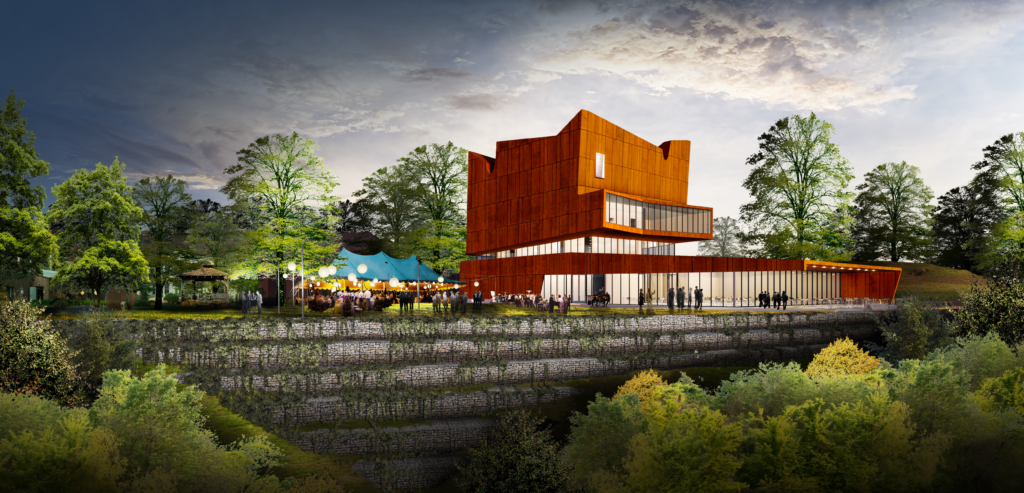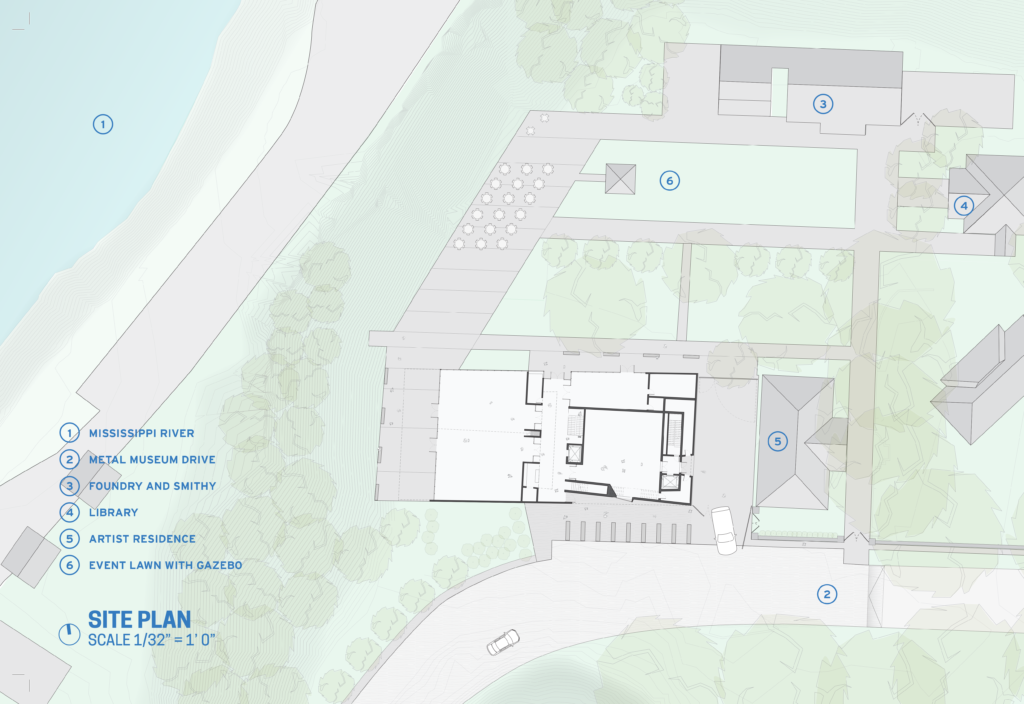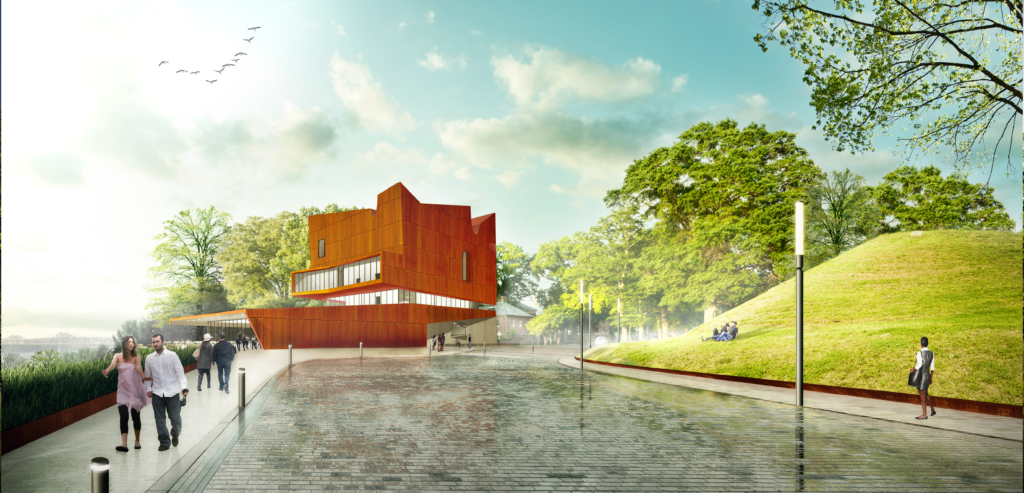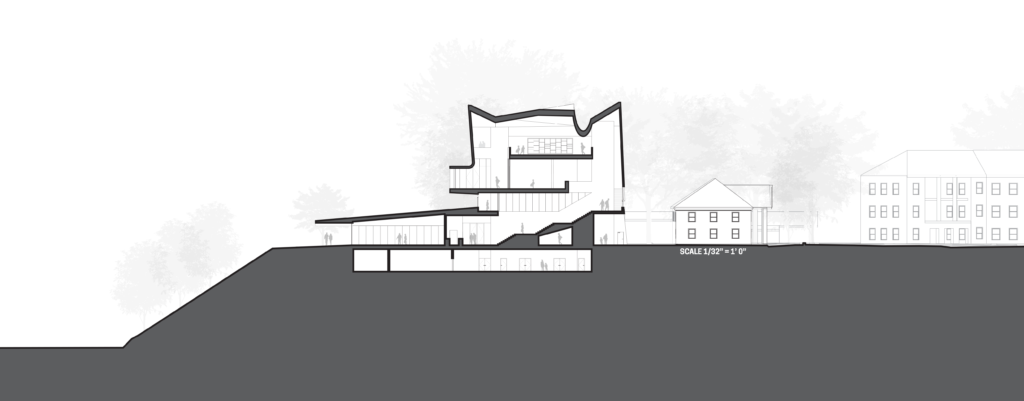National Ornamental Metals Museum
National Ornamental Metal Museum Modern Addition
Completed as BIM Manager and Project Manager for Marlon Blackwell Architects
The Modern Addition to the National Ornamental Metal Museum stands proudly on a bluff overlooking the Mississippi River. It is part of the French Fort community. South of downtown Memphis, it is an area rich in historical and archaeological importance. Earthwork mounds built by ancient indigenous peoples later used by the Chickasaw Tribe, sit next to brick Georgian buildings that served military efforts for the Civil War. Following the closure of the military complex, the Metal Museum was established in the 1970’s, reinstating a cultural anchor to this part of the City.
The project evokes both the spirit of the place while simultaneously celebrating metals as a material, craft and art form. The built ensemble consists of a sculpted figure and base, which commands a presence as one crosses the Harahan Bridge. It is oriented east to west, aligning itself to the existing Museum. Between the building and the street, a plaza is raised gently creating a sense of arrival and pause for visitors. To the north it opens onto newly formed courtyards, and engages with sweeping river views under a west facing porch, an extension of a multipurpose event space.
Along a measured sequence, one ascends from the ground floor lobby and gift shop, up the sculpted figure along a monumental stair; a volume that displays exhibits suspended from above. The stair continues to wrap around the perimeter of gallery and administrative functions, stopping to give pause for the various views of its surroundings. Arriving at the upper level galleries, visitors discover tall sculpted ceiling volumes bathed by natural light. Light and circulation are in a state of constant exchange between the works of art and the volumes that enclose them.
Form and material are fused to create an expression of the artwork they contain. Interior volumes of view and contemplation push out thereby creating a visible tension, where weathered steel panels are shaped into a dynamic plastic form. Soft curves blend with precise angles, evoking the command of a metalsmith forging a raw object into an elegant form.
This project aspires to reflect upon the rich history of the site through its abstraction and figuration. The ideas it draws from seek to convey the pleasure of immediate experience as it inspires curiosity into the craft and art of metal workers. It strives to honor the traditions of ornamental metal, while optimistically looking forward to represent the culture of its craft and vitality as an art form.






